
Mastering Blockchain, Second Edition
by
Imran Bashir
Published 28 Mar 2018
It includes a special field, also called coinbase, which acts as an input to the coinbase transaction. This transaction also allows up to 100 bytes of arbitrary data that can be used to store arbitrary data. In the genesis block, this transaction included the most famous comment taken from The Times newspaper: "The Times 03/Jan/2009 Chancellor on brink of second bailout for banks." This message is a proof that the genesis block was not mined earlier than January 3, 2009. This is because first Bitcoin block (genesis block) was created on January 3, 2009 and this news excerpt was taken from that day's newspaper. A coinbase transaction input has the same number of fields as usual transaction input, but the structure contains coinbase data size and coinbase data fields instead of unlocking script size and unlocking script fields.
…
The Geth binary can be copied into /usr/bin or the appropriate path on Raspbian to make it available from anywhere in the operating system. When the download is finished, the next step is to create the genesis block. The same genesis block needs to be used that was created previously in Chapter 12, Ethereum Development Environment. The genesis file can be copied from the other node on the network. This is shown in the following screenshot. Alternatively, an entirely new genesis block can be generated. { "nonce": "0x0000000000000042", "timestamp": "0x00", "parentHash": "0x0000000000000000000000000000000000000000000000000000000000000000", "extraData": "0x00", "gasLimit": "0x8000000", "difficulty": "0x0400", "mixhash": "0x0000000000000000000000000000000000000000000000000000000000000000", "coinbase": "0x3333333333333333333333333333333333333333", "alloc": { }, "config": { "chainId": 786, "homesteadBlock": 0, "eip155Block": 0, "eip158Block": 0 } } Once the genesis.json file is copied onto the Raspberry Pi; the following command can be run to generate the genesis block.
…
{ "nonce": "0x0000000000000042", "timestamp": "0x00", "parentHash": "0x0000000000000000000000000000000000000000000000000000000000000000", "extraData": "0x00", "gasLimit": "0x8000000", "difficulty": "0x0400", "mixhash": "0x0000000000000000000000000000000000000000000000000000000000000000", "coinbase": "0x3333333333333333333333333333333333333333", "alloc": { }, "config": { "chainId": 786, "homesteadBlock": 0, "eip155Block": 0, "eip158Block": 0 } } Once the genesis.json file is copied onto the Raspberry Pi; the following command can be run to generate the genesis block. It is important that the same genesis block is used that was generated previously otherwise the nodes will effectively be running on separate networks: $ ./geth init genesis.json This will show the output similar to the one shown in the following screenshot: Initialize genesis file After genesis block creation, there is a need to add peers to the network. This can be achieved by creating a file named static-nodes.json, which contains the enode ID of the peer that geth on the Raspberry Pi will connect for syncing: Static nodes configuration This information can be obtained from the Geth JavaScript console by running the following command, and this command should be run on the peer to which Raspberry Pi is going to connect: > admin.nodeInfo This will show the output similar to the one shown in the following screenshot: geth nodeInfo After this step, further instructions presented in the following sections can be followed to connect Raspberry Pi to the other node on the private network.
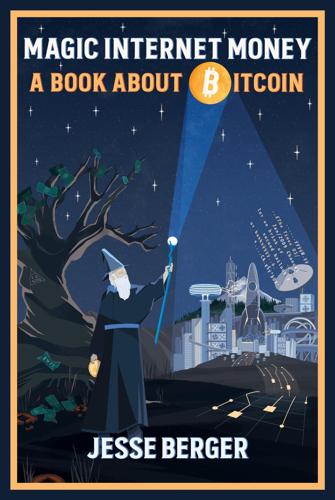
Magic Internet Money: A Book About Bitcoin
by
Jesse Berger
Published 14 Sep 2020
It directly confronts long-held monetary dogma, and the transparency of its network means that its activities can be observed, measured, and analyzed, allowing anyone to contemplate the disruptive nature of Satoshi’s vision. 2.2 Genesis: A New Hope “Behind this mask there is more than just flesh. Beneath this mask there is an idea ... and ideas are bulletproof.” Alan Moore, V for Vendetta Satoshi first ran the Bitcoin software on January 3, 2009, when the network was launched in the public domain. This initial instance of Bitcoin is known as the “Genesis block.” Within the Genesis block, Satoshi embedded the following message: “The Times 03/Jan/2009 Chancellor on brink of second bailout for banks.” Here, Satoshi commemorated the network’s launch by highlighting a timely concern about the moral hazards inherent in our global monetary and banking systems, which were, and still are, on the brink of fallibility.
…
In the post-Satoshi era, Bitcoin has continued to be relentlessly productive. With each passing day, it infringes further into the territory of the legacy monetary system, inspiring the study of uncommon knowledge about money, and fanning the flames of its public discourse. (Top) Cover of The Times, January 3, 2009. (Bottom) Raw hexadecimal output of the Genesis Block. 2.3 Open Source: The Internet Strikes Back “We see Bitcoin as potentially the greatest social network of all.” Tyler Winklevoss, Venture Capitalist Bitcoin would not be possible without the Internet. It lets computers communicate freely with each other by using standardized data transmission formats and processes, known as “protocols.”
…
In this way, mining enforces the foundational promise made by Bitcoin – to only ever issue 21 million coins – a strict limit that very credibly differentiates it from any other known money. Bitcoin’s Supply Issuance Schedule: Bitcoins are issued at a decelerating rate. The higher the block height (the number of blocks between any given block and the Genesis block), the lower the rate of issuance. Bitcoin entered the 4th epoch of block rewards (6.25 bitcoins per block) in May 2020 when it reached the 630,000-block mark, and it will enter the next epoch at block 840,000, which is expected to be mined in the year 2024. Source: https://en.bitcoin.it/wiki/Controlled_supply 2.7 In Memoriam: The Shrine of Satoshi “I volunteer!
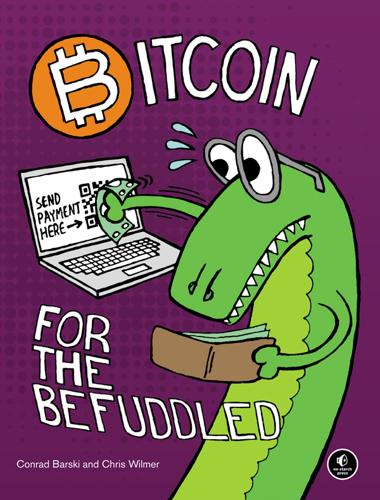
Bitcoin for the Befuddled
by
Conrad Barski
Published 13 Nov 2014
Shortly after publishing the paper, Satoshi released the first version of a program that implemented the idea, dubbed Bitcoin-Qt 0.1, and invited others to download and try running it. The first block in the blockchain, often referred to as the genesis block, was added by Satoshi on January 3, 2009. When he added the block to the blockchain, he inserted a short message, which all miners can do. In the genesis block, Satoshi wrote, “The Times 03/Jan/2009 Chancellor on brink of second bailout for banks.” This was the January 3, 2009, headline on the front page of The Times, a British newspaper. By including this message in the genesis block, Satoshi proved that he couldn’t have added it to the blockchain before that date. Some think that the message choice also revealed a bit about Satoshi’s motivations for creating Bitcoin.
…
By continuing this process indefinitely, these blocks will form a blockchain, adding weight to the time suggested in the initial block (a genesis block). This exact blockchain strategy was described by Satoshi soon after he created Bitcoin.2 However, a couple of open questions remain about this algorithm’s description: Aren’t we back to square one, piling confirmations on top of confirmations ad infinitum? Surprisingly, the answer is no. Because of the computational effort involved in creating blocks, every new block generated as a confirmation of a previous block provides statistical information about the total computational power possessed by the entire population of generals. Consequently, when a given genesis block has approximately six more confirmations amassed on top of it than any other genesis block, the result is almost (but not quite) absolute certainty that the majority of generals are in agreement with the suggested attack time.
…
Consequently, when a given genesis block has approximately six more confirmations amassed on top of it than any other genesis block, the result is almost (but not quite) absolute certainty that the majority of generals are in agreement with the suggested attack time. (However, because this is a probabilistic solution, certainty will always be a bit less than 100 percent, which is why the original Two Generals Problem is still considered unsolved in a purely theoretical sense. But with Satoshi’s approach, certainty can be arbitrarily close to 100 percent.) However, this approach of using proof-of-work and a blockchain to coordinate the attacks of the generals still has a subtle flaw: A general who is lazy could cheat the network by never using her computer to mine blocks.

The Mysterious Mr. Nakamoto: A Fifteen-Year Quest to Unmask the Secret Genius Behind Crypto
by
Benjamin Wallace
Published 18 Mar 2025
A bearded, bandanna’d anarchist who posted to YouTube as The Real Plato was driving from Connecticut to California, Jack Kerouac-style, and attempting to fund the trip solely with bitcoin. Rare-coin enthusiasts spoke of a time years hence when people would trade unusual bitcoins—like those from the so-called Genesis Block, the first in the chain—as eagerly as if they were 1933 Double Eagles. Even as I got caught up in the excitement, certain aspects escaped me. I could see how this new money might be attractive in a place like Argentina, where hyperinflation and currency controls were real. Likewise in Mexico or the Philippines or much of Africa, where more than 60 percent of the population didn’t have bank accounts.
…
The second place Nakamoto had announced his white paper was the website of the P2P Foundation, an idealistic nonprofit dedicated to peer-to-peer networks of all kinds. In his profile on the site, Nakamoto gave his residence as Japan. But no one really believed he was Japanese. His English was flawless, with the supple confidence of a native speaker. He sounded British, or at least from a Commonwealth country. The Genesis Block had had embedded within it a headline from the London Times, and in both the Bitcoin source code and his posts to the BitcoinTalk forum, Nakamoto favored Anglo spellings like colour and optimise. The Times headline hinted at Nakamoto’s motivation: “Chancellor on Brink of Second Bailout for Banks.”
…
In between airy musings about a Bitcoin-dominated future and networking by entrepreneurs who had Bitcoin-related start-ups, attendees traded theories about Nakamoto, who had never responded to my email. Religious overtones had already begun to creep into the way Bitcoiners spoke. The first block mined by Nakamoto was, after all, known as the Genesis Block. The event merch was a T-shirt that read I AM SATOSHI. The question loomed over the conference. Might he be here among us? Not, I thought, if he was someone who was incapable of making the trip. Mr. Rogers Hal Finney, the digital-cash buff toward whom Nick Szabo had pointed me, had a radiant smile and, for a time, a pencil mustache of such lush breadth and Euclidean straightness it could have been cast in Anchorman: The Legend of Ron Burgundy.

Bitcoin Billionaires: A True Story of Genius, Betrayal, and Redemption
by
Ben Mezrich
Published 20 May 2019
And then three months later, the first version of the Bitcoin software was released into the wild. In thirty-one thousand lines of code, Satoshi was able to achieve what no one else before him had: the elimination of the need for trusted, central parties. On January 3, 2009, Satoshi verified the first Bitcoin block, block 0—the “Genesis Block.” Embedded in the Genesis Block was the headline of the London Times newspaper of that day: CHANCELLOR ON BRINK OF SECOND BAILOUT FOR BANKS The headline itself was a sobering reminder of human fallibility and the impact it had on the financial system. And soon after, Satoshi vanished, never to be heard from again.
…
But that wasn’t the only mysterious part. The invite was for May 16 in San Francisco at 6:00 P.M., the night before their keynote address at Bitcoin 2013. Other than the date, time, and location, there were no other details. The message read only: Look for the Genesis Block at 631 Folsom … photo attached. Tyler looked up from the phone. “The Genesis Block,” he said. That was the name used in the community to describe the first block of the Bitcoin blockchain. It was mined by Satoshi himself back in 2009. Charlie, BitInstant, the chaos of the meeting they’d just left, were suddenly put into perspective by that strange little email.
…
Their destination appeared to be a skyscraper with a nondescript lobby and a bored-looking concierge behind a desk, who had no idea what Cameron and Tyler were looking for. It wasn’t until they were back out on the street, scanning the building’s facade, that they found it—right out in the open for anybody walking by to see: a single door, with a small sign taped to it, which read THE GENESIS BLOCK. “I wish Naval had given us a little bit of a clue about what we’re walking into,” Tyler whispered to Cameron. The whispering was probably overkill, but something about the mysteriousness of the moment, the energy, made it feel right. Bitcoin 2013—which would begin the next day—had been hurtling toward them with much fanfare, publicity, and preinterviews.
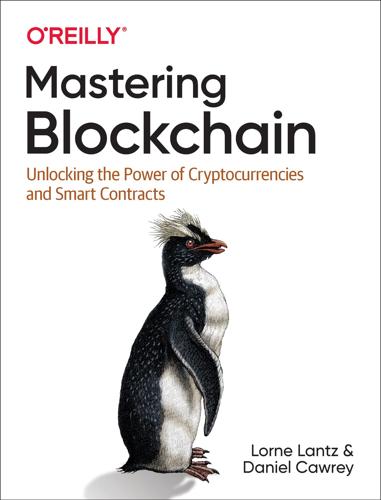
Mastering Blockchain: Unlocking the Power of Cryptocurrencies and Smart Contracts
by
Lorne Lantz
and
Daniel Cawrey
Published 8 Dec 2020
Although not without its flaws, Bitcoin is considered to be leaps and bounds beyond previous attempts at achieving fully digital and distributed storage of value. Achieving Consensus On January 3, 2009, Satoshi Nakamoto “mined” the first 50 bitcoins, utilizing processing power to create the first Bitcoin block. Known as the Genesis block, this first block in the Bitcoin blockchain referred to the financial crisis as the purpose for bringing the network to life. In the coinbase, or transaction content input, the Genesis block has this information: The Times 03/Jan/2009 Chancellor on brink of second bailout for banks Bitcoin is a distributed network, which means people were needed to act as miners in the system. So, Satoshi produced the first Bitcoin client.
…
It adds new bitcoin to the supply, which is given as a reward to the miner who adds the block to the chain. Miners are discussed further in Chapter 2. Block height number This number identifies how many blocks there are between the current block and the first block in the chain (also known as the Genesis block). Merkle root This is a hash that allows proof of the validity of the blockchain (Chapter 2 talks more about Merkle roots). Note The name of a blockchain system is generally used as a proper noun, while its unit of account is a regular noun. Thus, a cryptocurrency network is capitalized (“Alice loves the decentralized aspects of Bitcoin”), but a cryptocurrency unit of account is lowercase (“Alice sent two bitcoin (or bitcoins) to Bob”).
…
However, those are just two high-profile examples. Others have also claimed to be (or denied being) Satoshi, and to date there has not been enough evidence to reveal their true identity. There has also been speculation about the number of bitcoin Satoshi allegedly owns. One thing that’s for sure is that Satoshi mined the Genesis block of Bitcoin, so in theory the easiest proof would be to uncover evidence of the identity behind that address. Crypto-Based Stablecoins In the previous chapter, we discussed a few examples of stablecoins, which use blockchain technology to peg a cryptocurrency to another, more stable asset.

The Age of Cryptocurrency: How Bitcoin and Digital Money Are Challenging the Global Economic Order
by
Paul Vigna
and
Michael J. Casey
Published 27 Jan 2015
In firing up the software, Nakamoto created the Genesis Block, the first-ever fifty-coin “block” of bitcoins. Over the following six days he would mine many more bitcoins—as many as forty-three thousand if the software worked to its inbuilt schedule of a block every ten minutes. As of August 2014, a haul that size would be worth about $21 million, but back then they were worth exactly zero, since Nakamoto had no one else to transfer them to, no way to “spend” them. If a hallmark of a currency is utility, at this early point bitcoin had absolutely none. He had to get others to join. So, six days after the Genesis Block, Nakamoto went back to the same cryptography mailing list and told its readers that the program was ready: “Announcing the first release of bitcoin, a new electronic cash system that uses a peer-to-peer network to prevent double-spending.”
…
Banks must be trusted to hold our money and transfer it electronically, but they lend it out in waves of credit bubbles with barely a fraction in reserve.” It’s about as direct an indictment of the existing system as he makes. In another post, he writes with unusual élan, “Escape the arbitrary inflation risk of centrally managed currencies!” Another clue is embedded in the code of the Genesis Block. To authenticate the time stamp of that creation, Nakamoto referenced a headline from the front page of The Times of London on January 4, 2009: “Chancellor on Brink of Second Bailout for Banks.” The chancellor in question was Alistair Darling, then the United Kingdom’s chancellor of the exchequer, who was struggling to prevent outright collapse of the British banking system.
…
Like other cultures, bitcoin also has its art, its music, even its poetry. It has also cultivated larger-than-life personalities who are recognized as “community leaders.” Tellingly, these personalities are often described as “evangelists.” Similarly religious undertones are everywhere in the language and concepts attached to bitcoin: the Genesis Block label pinned on Nakamoto’s first mined batch of coins; the nickname Bitcoin Jesus given to Roger Ver, now one of the community’s most prominent representatives; the very idea of a “believer”; and the notion that one has an epiphany once the “truth” of bitcoin’s solution is revealed. The most important of these quasi-religious ideas, however, lies in the core cultural building block that Nakamoto himself laid with his mysterious appearance in the world of cryptocurrencies in 2008 and then with his equally mysterious disappearance from it three years later.
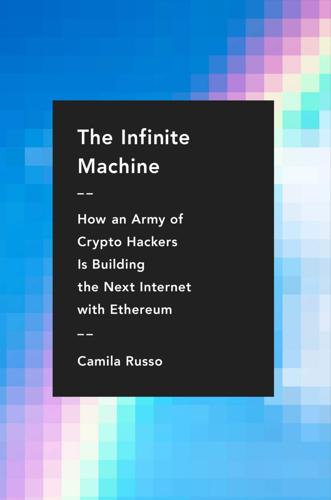
The Infinite Machine: How an Army of Crypto-Hackers Is Building the Next Internet With Ethereum
by
Camila Russo
Published 13 Jul 2020
“Ethereum is not something that’s centrally ‘launched,’ but instead emerges from consensus,” Stephan Tual wrote in a July 22 blog post explaining the steps for developers who wanted to join the main network. “Users will have to voluntarily download and run a specific version of the software, then generate and load the Genesis block to join the official project’s network.” This phase of the Ethereum network was named after the American frontier, where there were vast opportunities for settlers, but also high risks. Frontier users had to first generate, then load the Genesis block into their Ethereum client. The Genesis block was pretty much a database file containing all the transactions from the ether sale. When a user input it into the client (the software used to access the network) it represented their decision to join the network under its terms.
…
The Bitcoin creator should have access to the keys that control the first Bitcoins ever mined. Those coins are stored in a few Bitcoin addresses and have never moved, even as the digital currency’s price increase has made them worth hundreds of millions of dollars. If someone wanted to prove they were Satoshi, they could sign a message with the key associated with Bitcoin’s genesis block and move some of those early coins around. Mathias sat cross-armed as he watched the exchange between Charles and Richard until he just couldn’t take it anymore. “Just sign something and fuck off,” he said. Mathias, Taylor, Stephan, and Mihai all picked up on these hints and were irritated that Charles seemed to imply, without actually saying it, that he was Satoshi.
…
In a supporting document listing the firm’s facts and assumptions, the lawyers wrote that they expected that the Ethereum Foundation “will promote the exchange of ether in a manner consistent with the distribution of a product, and not as a speculative investment,” and that it won’t make any commitments to potential presale participants to continue developing or maintaining the Ethereum platform after the creation of the genesis block. Finally, the months of work had paid off. The opinion letter meant a big, serious law firm believed they wouldn’t break securities laws if they proceeded with their crowdsale. The letter gave them enough protection, or at least perceived protection, to raise the money that would allow them to build the project they were dreaming of.

Life After Google: The Fall of Big Data and the Rise of the Blockchain Economy
by
George Gilder
Published 16 Jul 2018
Current credit card systems, by contrast, are based on secrecy and centralization and use protected networks and firewalled data centers filled with the personal information of the transactors. Bitcoin’s public ledger of transactions is collected in blocks roughly every ten minutes, beginning with the current block and going back to the “Genesis block,” created by Satoshi Nakamoto, the pseudonymous inventor of bitcoin. Each block is confirmed when at least half the participants in the bitcoin verification process—the “miners”—hash the block mathematically with all the previous blocks since the Genesis block. In order to change or rescind a transaction, therefore, more than half the computers in the system have to agree to recompute and restate all the transactions since Genesis.
…
Marc Andreessen or Gavin Andresen, Naval Ravikant or Chamath Palihapitiya, Jed McCaleb or Nick Szabo could move a scene or animate a meeting or keynote a CoinSummit. But from venture capitalists to complementary coders to bit players or even legendary titans, none seemed to have the proof-of-work to hash into the Genesis Block of a heroic bitcoin chain. Finally I gave up on this accessible circle and resolved to find and interview the Genesis man himself. Why not? Satoshi Nakamoto was the architect of bitcoin, inventor of the blockchain, and the prime mover of the plot. True, he did not mention the blockchain in his paper, though he specified it, and true, no one seemed to know who he was or where he had gone.
…
“We do not want to lead with ‘anonymous currency’ or ‘currency outside the reach of any government.’ ” Satoshi said. “I am definitely not making such a taunt or assertion. Some people say, ‘Bring it on, WikiLeaks.’ I say, ‘No, don’t bring it on, WikiLeaks!’ The bitcoin project needs to grow gradually, so the software can be strengthened along the way.” “But in the initial ‘Genesis Block’ of bitcoin, you did put a headline from the Times of London declaring that the ‘Chancellor was bailing out the banks again,’ ” I said. “That was kind of a poke at the hive.” Satoshi only smiled. “Anyway, I understand what you are doing,” I said, “but how can you have monetary policy if the money supply is beyond the control of bankers?”

The Scandal of Money
by
George Gilder
Published 23 Feb 2016
Bitcoin blockchain: A method of secure transactions based on wide publication and decentralization of a ledger across the Internet, in contrast to current credit card systems based on secrecy and centralization, using protected networks and firewalled data centers filled with the personal information of the transactors. The public ledger of transactions is collected in blocks roughly every ten minutes, beginning with the current block and going back to the “Genesis block” created by Satoshi Nakamoto, the pseudonymous inventor of bitcoin. Each block is confirmed when at least half the participants in bitcoin nodes—the “miners”—hash the block mathematically with all the previous blocks since the Genesis block. In order to change or rescind a transaction, therefore, more than half the computers in the system have to agree to recompute and restate all the transactions since Genesis.
…
Bitcoin is a public ledger of transactions that cannot be abused or manipulated or falsified, because it is published on potentially millions of computers around the world. The bitcoin ledger uses mathematical hashing tools to incorporate in every new transaction identifiable time-stamped traces of every previous transaction ever conducted in bitcoin since the “Genesis block” in 2009. Because each new block of transactions bears a mathematical fingerprint of all previous blocks, it cannot be changed without changing all the blocks. Because each transaction is verified and propagated to all the computers on the network, it cannot be reversed or changed without hacking a majority of all the computers on the network.

On the Edge: The Art of Risking Everything
by
Nate Silver
Published 12 Aug 2024
Technology, nytimes.com/2020/07/08/technology/robinhood-risky-trading.html. GO TO NOTE REFERENCE IN TEXT the first Bitcoins: Though due to a quirk in the code, these particular BTC can’t be spent or traded. “Genesis Block,” Bitcoin Wiki, en.bitcoin.it/wiki/Genesis_block. GO TO NOTE REFERENCE IN TEXT Times of London: Benedict George, “The Genesis Block: The First Bitcoin Block,” CoinDesk, January 3, 2023, coindesk.com/tech/2023/01/03/the-genesis-block-the-first-bitcoin-block [inactive]. GO TO NOTE REFERENCE IN TEXT had inspired Nakamoto: Alan Feuer, “The Bitcoin Ideology,” The New York Times, December 14, 2013, sec.
…
A player who posted a graph with a sick brag saying he’d made $80,000 in the last month might go on a losing streak and never be heard from again. “Generally, I don’t think WallStreetBets is skilled,” Li said. “The posts you see of the success stories—it’s one in a million. It doesn’t show the 999,000 people that lost their money and never played again—or are like me.” Bitcoin Is from Mars, Ethereum Is from Venus The Genesis Block was created by a person going by the name Satoshi Nakamoto on January 3, 2009. It awarded 50 bitcoin (BTC) to the address 1A1zP1eP5QGefi2DMPTfTL5SLmv7DivfNa, creating the first Bitcoins in history. It also came with a message written in hexadecimal: The Times 03/Jan/2009 Chancellor on brink of second bailout for banks This was a reference to a headline that day in The Times of London.
…
“The root problem with conventional currency is all the trust that’s required to make it work,” he wrote. “The central bank must be trusted not to debase the currency, but the history of fiat currencies is full of breaches of that trust.” Nakamoto wanted to create a decentralized digital currency that wasn’t dependent upon trust, or the authority of the government or any central bank. The Genesis Block is still included in every copy of the Bitcoin blockchain—and every copy of the blockchain is the same, except for how they describe very recent transactions that have not yet been verified. A blockchain is basically just a shared, ever-lengthening digital ledger of every transaction in history in chronological order, meaning something like the following:[*10] The Times 03/Jan/2009 Chancellor on brink of second bailout for banks•••Alice-Paid-Bob-004.000BTC-On-Sept092009•••Bob-Paid-Carol-002.500-BTC-On-Sept102009•••Carol-Paid-Alice-010.000BTC-On-Sept122009 So in one sense, Nakamoto’s idea was truly radical—Bitcoins were the first digital asset that could be transferred without the approval of any government or central authority.
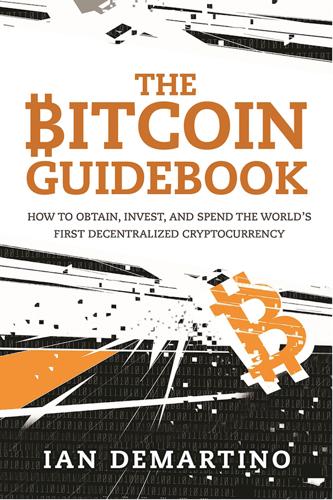
The Bitcoin Guidebook: How to Obtain, Invest, and Spend the World's First Decentralized Cryptocurrency
by
Ian Demartino
Published 2 Feb 2016
The identity of Nakamoto pales in significance to the fact that the Bitcoin white paper was published. Not long after the 2008 post, Bitcoin was launched. Nakamoto already had the code ready and claimed that he had worked on it for two years prior to the release of the white paper. On January 3, 2009, the genesis block (i.e., the first block in a blockchain) of Bitcoin was established. On January 9, v0.1 of Bitcoin was released through the cryptography mailing list. On January 12, the first transaction took place between Satoshi Nakamoto and Hal Finney, and the Bitcoin revolution was underway. There were a few more milestones that are worth mentioning.
…
A pre-mine is exactly what it sounds like. Before a coin launches, the developer creates a lot of that particular coin and puts it under his or her personal control. There are several uses for this fund, including paying developers or growing the community. There is nothing wrong with setting aside some coins before the genesis block—the first block in a coin’s blockchain—if those funds are actually going to be used to fund coin development and it is a reasonable amount. If the pre-mine is larger than a few percentage points, then it is likely that the developer is running a pump-and-dump scheme. A typical suspicious pre-mine will consist of a large percentage of the coin’s total distribution, ensuring that even low prices will result in a significant profit for the creator.
…
A typical suspicious pre-mine will consist of a large percentage of the coin’s total distribution, ensuring that even low prices will result in a significant profit for the creator. The pre-mine “trick” isn’t used that often anymore, because most of the community has gotten wise to it. The blockchain doesn’t lie and will reveal any major holders of the coin and how much they hold. Some developers have tried to hide the pre-mine in the genesis block and then just ensure they get to mine that block, but even this tactic is an old one and is quickly noticed by members of the BitcoinTalk forums these days. After you determine that a coin doesn’t have a pre-mine or that its pre-mine was transparent and reasonable—pure proof-of-stake coins need some pre-mine in order to kick off the currency—then the next thing to look at is how likely the coin is to get on an exchange.
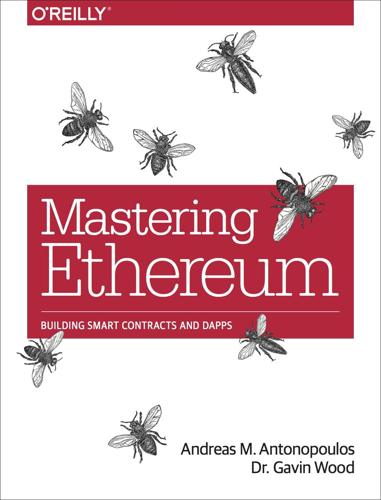
Mastering Ethereum: Building Smart Contracts and DApps
by
Andreas M. Antonopoulos
and
Gavin Wood Ph. D.
Published 23 Dec 2018
Block A collection of required information (a block header) about the comprised transactions, and a set of other block headers known as ommers. Blocks are added to the Ethereum network by miners. Blockchain In Ethereum, a sequence of blocks validated by the proof-of-work system, each linking to its predecessor all the way to the genesis block. This varies from the Bitcoin protocol in that it does not have a block size limit; it instead uses varying gas limits. Bytecode An abstract instruction set designed for efficient execution by a software interpreter or a virtual machine. Unlike human-readable source code, bytecode is expressed in numeric format.
…
The EVM uses an accounting mechanism to measure the consumption of gas and limit the consumption of computing resources (see “Turing complete”). Gas limit The maximum amount of gas a transaction or block may consume. Gavin Wood A British programmer who is the cofounder and former CTO of Ethereum. In August 2014 he proposed Solidity, a contract-oriented programming language for writing smart contracts. Genesis block The first block in a blockchain, used to initialize a particular network and its cryptocurrency. Geth Go Ethereum. One of the most prominent implementations of the Ethereum protocol, written in Go. Hard fork A permanent divergence in the blockchain; also known as a hard-forking change.
…
The next sections explains the challenge with the initial synchronization of Ethereum’s blockchain. The First Synchronization of Ethereum-Based Blockchains Normally, when syncing an Ethereum blockchain, your client will download and validate every block and every transaction since the very start — i.e., from the genesis block. While it is possible to fully sync the blockchain this way, the sync will take a very long time and has high resource requirements (it will need much more RAM, and will take a very long time indeed if you don’t have fast storage). Many Ethereum-based blockchains were the victim of denial-of-service attacks at the end of 2016.

Bit by Bit: How P2P Is Freeing the World
by
Jeffrey Tucker
Published 7 Jan 2015
The structure and language of this paper sent the message: This currency is for computer technicians, not economists nor political pundits. The paper's circulation was limited; novices who read it were mystified. But the lack of interest didn’t stop history from moving forward. Two months later, those who were paying attention saw the emergence of the “Genesis Block,” the first group of bitcoins generated through Nakamoto’s concept of a distributed ledger that lived on any computer node in the world that wanted to host it. Here we are six years later and a single bitcoin trades at $400 and has been as high as $1,200 per coin. The currency is accepted by many thousands of institutions, both online and offline.
…
Even today you find remnants of the eugenic spirit in the medical tests associated with the license to marry and the requirement that people who officiate at the marriage do so in the name of the State. No surprise here: anything that politics touches doesn’t end well. If you are looking for a root cause of the current culture wars over marriage, look at its nationalization and you will find the answer. In our times, technology offers a viable alternative. Since the Genesis Block was released in January of 2009, all the focus has been on bitcoin and its spinoff coins. But if you isolate the merit of the blockchain itself, you find an extraordinary innovation that is capable of doing far more than provide a new, de-politicized money for the world. The blockchain is a system of providing durable, verifiable, time-stamped records of information transfer, peer to peer and without third-party trust relationships.
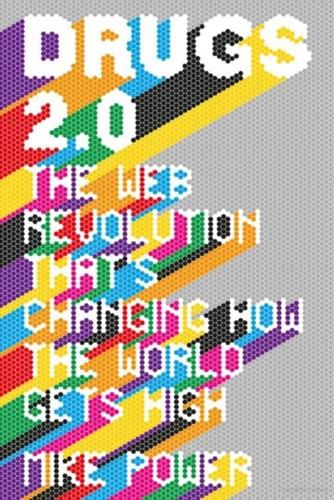
Drugs 2.0: The Web Revolution That's Changing How the World Gets High
by
Mike Power
Published 1 May 2013
The currency, or rather, the system that creates the currency, was released to the web on 1 November 2008, as the world economic system teetered on the brink of systemic collapse. Anonymous software coder Satoshi Nakamoto issued the open source application, and included a sly reference to the latest banking bailout by Britain’s then-chancellor of the exchequer, Alistair Darling, buried in code for the so-called Genesis Block – the first coins ever ‘mined’, in January 2009.4 The main reason no purely digital currency has ever gained traction is because data-as-cash has a central flaw. As the music industry has discovered in recent years, digital information is infinitely copyable. Digital money, until now, could be spent again and again.
…
Nicolas Christin, ‘Traveling the Silk Road: A Measurement Analysis of a Large Anonymous Online Marketplace’, Carnegie Mellon INI/CyLab, July 2012; http://arxiv.org/abs/1207.7139 2. www.nytimes.com/2005/06/12/opinion/12rich.html? pagewanted=all 3. Royal Mail Spokesman response quoted on www.bbc.co.uk/blogs/watchdog/2012/05/ royal_mail_1.html 4. Hidden in the code for the Genesis Block was this sentence, citing a Times of London report: ‘The Times 03/Jan/2009 Chancellor on brink of second bailout for banks’. 5. www.wired.com/magazine/2011/11/mf_bitcoin/ all/1 6. Ibid. 7. http://anonymity-in-bitcoin.blogspot.co.uk/ 2011/07/bitcoin-is-not-anonymous.html 8. www.philzimmermann.com/EN/essays/ WhyIWrotePGP.html 9. www.theregister.co.uk/2009/11/24/ripa_jfl/ page4.html 10.
…
Nicolas Christin, ‘Traveling the Silk Road: A Measurement Analysis of a Large Anonymous Online Marketplace’, Carnegie Mellon INI/CyLab, July 2012; http://arxiv.org/abs/1207.7139 2. www.nytimes.com/2005/06/12/opinion/12rich.html? pagewanted=all 3. Royal Mail Spokesman response quoted on www.bbc.co.uk/blogs/watchdog/2012/05/ royal_mail_1.html 4. Hidden in the code for the Genesis Block was this sentence, citing a Times of London report: ‘The Times 03/Jan/2009 Chancellor on brink of second bailout for banks’. 5. www.wired.com/magazine/2011/11/mf_bitcoin/ all/1 6. Ibid. 7. http://anonymity-in-bitcoin.blogspot.co.uk/ 2011/07/bitcoin-is-not-anonymous.html 8. www.philzimmermann.com/EN/essays/ WhyIWrotePGP.html 9. www.theregister.co.uk/2009/11/24/ripa_jfl/ page4.html 10.
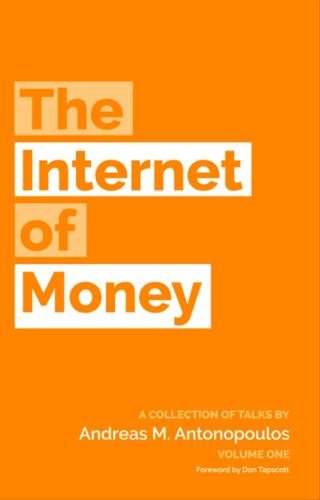
The Internet of Money
by
Andreas M. Antonopoulos
Published 28 Aug 2016
This is now happening not just to activist organizations; it’s happening to entire countries. The dream of nation-states, to create a totalitarian financial system, died on January 3rd, 2009, with the invention of bitcoin and the mining of the genesis block. "The dream of nation-states, to create a totalitarian financial system, died on January 3rd, 2009, with the invention of bitcoin and the mining of the genesis block." 3.7.2. Network-Centric Money Is Censorship Resistant Bitcoin is censorship-resistant. You may have heard this term. You cannot control where money is transmitted in bitcoin. It’s not attached to identities or geography.
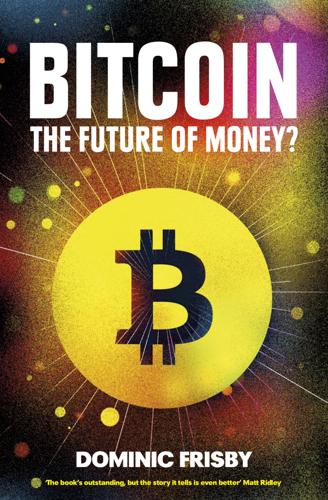
Bitcoin: The Future of Money?
by
Dominic Frisby
Published 1 Nov 2014
In other words the core technology is more reliable and secure than any other digital technology that has ever been fielded.’ That is some achievement. Some hackers see Bitcoin’s creation as a seminal point in the history of information technology. Rather as we have bc and ad, they have proposed that before 3 January 2009 (the date of the Genesis Block) be named Before Satoshi (bs) and after Bitcoin Era (be). That’s a lovely idea – though perhaps bn (Before Nakamoto) is preferable to bs. Well done. You’ve just finished the hardest chapter in the book. 2 The Anarchic Computing Subculture in which Bitcoin has its Roots Cypherpunks write code.
…
They were born in the world of Cypherpunks. As Szabo would later say to me, ‘Only a handful of people cared about this kind of thing before Satoshi.’ There really aren’t many people who Satoshi could be. The Easter eggs that Satoshi left hidden When some curious souls looked at the code of Bitcoin’s genesis block (the first bitcoins that were mined), they found a quotation. It had deliberately been left there, where Satoshi knew people would, sooner or later, find it. It said: The Times 03/Jan/2009 Chancellor on brink of second bailout for banks. This was the headline from The Times – and it came on the same day the first bitcoins were mined.
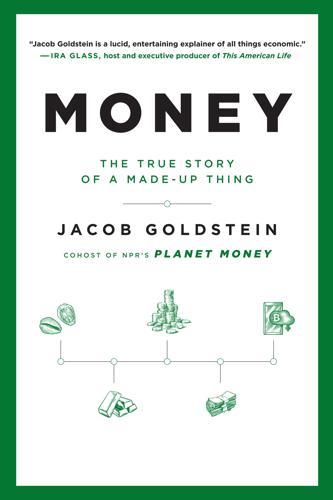
Money: The True Story of a Made-Up Thing
by
Jacob Goldstein
Published 14 Aug 2020
Satoshi was already taking a very long view. Just before the bitcoin code was released, Satoshi had created the first block of bitcoin. With perhaps a bit more drama than is absolutely necessary, it came to be called the “genesis block,” and it contained a little extra text: a front-page headline from the Times of London from January 3, 2009. It has been suggested that this was to prove that the genesis block was created on or after that date, in the same way a kidnapping victim is photographed holding up today’s newspaper to prove he’s still alive. But the choice of this particular headline, from this particular newspaper, conveys more than just the date: 00000070 00 00 00 00 00 00 FF FF FF FF 4D 04 FF FF 00 1D.…..ÿÿÿÿM.ÿÿ.. 00000080 01 04 45 54 68 65 20 54 69 6D 65 73 20 30 33 2F..EThe Times 03/ 00000090 4A 61 6E 2F 32 30 30 39 20 43 68 61 6E 63 65 6C Jan/2009 Chancel 000000A0 6C 6F 72 20 6F 6E 20 62 72 69 6E 6B 20 6F 66 20 lor on brink of 000000B0 73 65 63 6F 6E 64 20 62 61 69 6C 6F 75 74 20 66 second bailout f 000000C0 6F 72 20 62 61 6E 6B 73 FF FF FF FF 01 00 F2 05 or banksÿÿÿÿ..ò. 000000D0 2A 01 00 00 00 43 41 04 67 8A FD B0 FE 55 48 27 *.… CA.gŠý°þUH’ Bitcoin was a real technical advance.
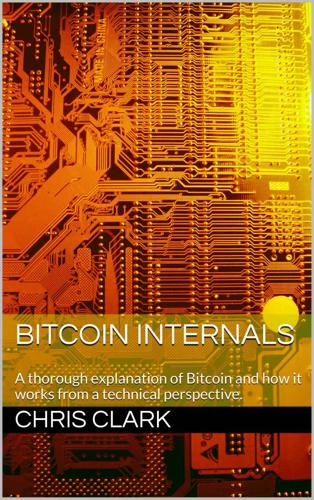
Bitcoin Internals: A Technical Guide to Bitcoin
by
Chris Clark
Published 16 Jun 2013
But if blocks could easily be added by anyone, an attacker could just make an alternate chain that reassigns ownership arbitrarily. * * * Figure 8.1: The black blocks represent the accepted branch, which is the longest. Gray blocks are kept in the block chain, but ignored because they are not on the longest branch. The leftmost block is the first block in the block chain, which is called the genesis block. * * * To prevent this, Bitcoin nodes require that a difficult proof of work problem be solved in order to add a block to the block chain. Since each block depends on a previous block, this creates a proof of work chain. To replace the entire chain, one would have to solve the proof of work problem for every block in the chain, which would require a massive amount of computing power.

Radical Technologies: The Design of Everyday Life
by
Adam Greenfield
Published 29 May 2017
Just as all the parties to every transaction are timestamped and hashed together to produce a unique fingerprint, so is each block. Because each successive block’s hash value is generated with the signature of the one immediately preceding it in time, it folds into itself the details of every block of Bitcoin transactions ever executed, tailing all the way back to the very first, the so-called Genesis Block. And again, because every participant in the network holds their own local copy of the blockchain, at no point is there the slightest need for transactions to be checked against any central registry or clearinghouse. The entire network works to maintain and protect the blockchain: its shared, public, distributed ledger.
…
But should they for whatever reason decide to collude with one another, they could execute a successful, and devastating, attack at any time. The 51-percent vulnerability has been there since the very beginning, coiled up and waiting in every transaction executed and every block confirmed, from the Genesis Block onward. The fact that it existed at all was tolerable, maybe, so long as processing power was widely distributed. And yet it remains, unpatched and incapable of being patched, even into an era in which that power has become concentrated in just a few hands. The reliability of the entire network therefore teeters on the fact that it simply hasn’t been exploited yet.
…
See Google de Certeau, Michel, 311 Deleuze, Gilles, 148, 211 dematerialization, 11 Demnig, Gunter, 72 de Monchaux, Nicholas, 101 Demos, 246 Deutsche Bank, 278–9 The Dialectic of Sex (Firestone), 191 El Diario (newspaper), 109 Dick, Philip K., 83, 244 digital fabrication, 85–114 digital rights management software, DRM, 292, 295 DiscusFish/F2 Pool mining pools, 139 distributed applications, 115, 147, 149, 163 distributed autonomous organizations, 161–81, 288, 302 distributed consensus, 126 distributed ledgers, 117, 137, 160, 293 Department of Motor Vehicles (DMV), generically, 158 Dodge Charger, 216–17, 221 döner, 71 “Double Bubble Trouble” (M.I.A.), 295 drones, 103, 188, 220, 277–8, 283, 295 DropCam, 281 Dubner, Stephen J., 237 dugnad, 170 Dunning-Kruger syndrome, 260 Dutch East India Company, the, 165 Easterbrook, Steve, 195 Edo, 69 Elemental Technologies, 281 Elephant and Castle Shopping Centre, 110 Eisenman, Peter, 70 Embassy of the United States, Beijing, 51 Eno, Brian, 238 Equal Credit Opportunity Rights, 248 Ethereum/Ether, 148–50, 152–4, 162–3, 168, 175–7, 179 Ethical Filament Foundation, 99 Ethiopia, 194 euro (currency), 100, 131, 136 “eventual consistency,” 134 Existenzminimum, 103 Expedia, 134 EZPass, 59 fablabs, 95, 100, 109–10 faceblindness, 67–8 Facebook, 69, 220–1, 227, 229, 232, 252, 275–9, 281, 284 Aquila autonomous aircraft, 278 Free Basics, 278 Instagram, 278 opacity of Trending News algorithm, 212, 252–3 Fadell, Tony, 276 false positive, truth value, 217, 235, 249 Family Assistance Plan, FAP, 204 Fan Hui, 268 feature engineering, 218 Federal Trade Commission, 248 FedEx, 278 Filabot, 98 Fillod, Odile, 107 Financial Times (newspaper), 177 FindFace software, 240–2 Firestone, Shulamith, 191 Fitbit Charge wearable device, 197 Five Hundred and Seven Mechanical Movements (Brown), 103 Flaxman, Seth, 250–1 foamed aluminum, 95 Ford Mustang, 216–17 Forrester, Jay, 56 Fortune Magazine, 257 Foucault, Michel, 35, 70, 160 Freakonomics (Levitt and Dubner), 237 Frey, Carl Benedikt, 194 Fully Automated Luxury Communism, 90, 111, 190, 289 gallium arsenide, 47 Galloway, Anne, 82 gambiarra, 291 Garrett, Matthew, 43 General Data Protection Regulation, 249 General Public License, 103 Genesis Block, 125, 139 genetic algorithms, 239, 253 gender of pedestrians, as determined by algorithm, 239 as performance, 239–40 of virtual assistants, 39 geofencing, 27 Gershenfeld, Neil, 95 Ghost Gunner, 108 Giger, H. R., 219 GitHub code repository, 242, 274, 281 “glassholes,” 84, 276 Global Village Construction Set, 103 go (game), 263–6 Goodhart’s Law, 247 Goodman, Bryce, 250–1 Google, 18, 24, 37–40, 46, 66, 69, 73–4, 76–8, 80, 84, 193, 212, 218–20, 247, 254, 264, 275, 276, 278, 281, 284 Boston Dynamics robotics division, 276 Chrome browser, 275 Daydream virtual reality headset, 275 Deep Dream, 80, 219 DeepMind, 264–5, 270, 276, 281 driverless cars, 193, 220 Glass augmented reality headset, 66, 73–4, 76–8, 80, 275 Home interface device, 38–40 Image Search, 218 Mail, 275 Maps, 24 Nest home automation division, 275–6 Nest thermostat, 275–6 Play, 18 Plus social network, 276 search results, 212 Sidewalk Labs, 276 Gladwell, Malcolm, 237 Glaser, Will, 220 Global Positioning System, 4, 16, 21, 26, 51, 67 Graeber, David, 205 Guangdong, 179 Guardian (newspaper), 276 Guattari, Félix, 148 Gu Li, 265 Hagakure, 267 Haldane, Andy, 194 Halo (game), 39 Hannah-Arendt-Strasse, 70 haptics, 16 Harman, Graham, 48 hash value, 123–4, 128–30 Hashcash, 121 hashing algorithm, 123 head-up displays, 66–7 Hearn, Mike, 179 Heat List, Chicago Police Department program, 230–1, 233, 235–6, 244 heroin, 228 heterotopias, 70 high-density polyethylene plastic filament, HDPE, 99 Hitachi Corporation, 197 Hollerith machines, 61 hooks, bell, 311 HR analytics, 199 Hungarian pengo, 120, 122 iaido, 266 iaijutsu, 266 IBM, 263 ideology of ease, 42 infrapolitics, 311 ING, bank, 262 input neurons, 215 Instagram.
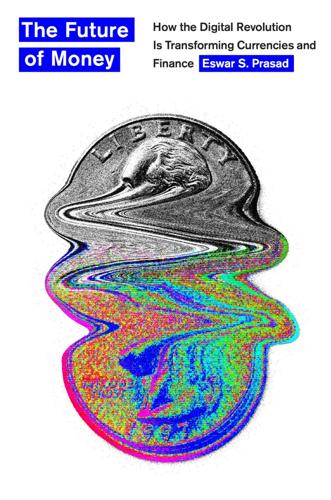
The Future of Money: How the Digital Revolution Is Transforming Currencies and Finance
by
Eswar S. Prasad
Published 27 Sep 2021
The text at the end of this section draws partially on Michael Casey, “Dollar-Backed Digital Currency Aims to Fix Bitcoin’s Volatility Dilemma,” Wall Street Journal (blog), July 8, 2014, https://blogs.wsj.com/moneybeat/2014/07/08/dollar-backed-digital-currency-aims-to-fix-bitcoins-volatility-dilemma/. Blockchain Economics Fruits of Labor For details about the genesis block on the Bitcoin blockchain, see Carla Tardi, “Genesis Block,” blog post, September 11, 2019, https://www.investopedia.com/terms/g/genesis-block.asp. Halving of Mining Rewards Changes in the pool of mining power imply that the Bitcoin algorithm’s difficulty target actually adjusts in both directions—the difficulty target falls when the pool of mining power declines.
…
What actually happens is that each new transaction block starts with a unique transaction that is known as a coinbase transaction. This is a transaction that has no inputs and only one output, consisting of the reward plus any transaction fees (to be discussed later) paid to the successful miner by those whose transactions appear on a particular block. The very first block on the Bitcoin blockchain, referred to as the genesis block, was mined on or after January 3, 2009. In addition to the usual sort of data, the block contains this text: “The Times 03 / Jan / 2009 Chancellor on brink of second bailout for banks.” This was the headline of the main article on the front page of the Times, a British newspaper, on January 3, 2009.

Whiplash: How to Survive Our Faster Future
by
Joi Ito
and
Jeff Howe
Published 6 Dec 2016
Banks must be trusted to hold our money and transfer it electronically, but they lend it out in waves of credit bubbles with barely a fraction in reserve.” He may have embedded another comment on his motivation for creating the cryptocurrency into the genesis block, in a parameter that reads, “The Times 03/Jan/2009 Chancellor on brink of second bailout for banks.”22 Just days after the creation of the genesis block, which produced fifty bitcoins, Satoshi released the first version of the open-source Bitcoin software platform. Written in C++, it was, according to Dan Kaminsky, the Internet security guru, nearly impenetrable. In a 2011 interview with the New Yorker, Kaminsky said, “When I first looked at the code, I was sure I was going to be able to break it.

Silk Road
by
Eileen Ormsby
Published 1 Nov 2014
American IT sociologist and philosopher Ted Nelson had named maths genius Shinichi Mochizuki (male, 44, Japan) in May 2013 in a video he released on YouTube, but, as with earlier ‘unmaskings’, the evidence was weak. And again, the accused denied it. In mid-2013, blogger Sergio Lerner uncovered a hoard of about $120 million in bitcoins owned by a single entity. That entity had begun mining right from block one – the so-called ‘genesis block’. Evidence pointed to the stash being owned by Nakamoto. That the coins had remained untouched sparked another round of conspiracy theories: that he had died, that the coins were held on a corrupted hard drive and could therefore not be recovered, or that he couldn’t cash out without destabilising the currency or revealing his identity.
…
Dorian Satoshi Nakamoto, a 64-year-old Japanese-American living a humble life in suburban Los Angeles. In a feature that bordered on harassment of the man (he called the police to support him as he spoke to McGrath), photos of a nondescript, ageing man and his modest house belied the myth. His fortune – the so-called and still untouched ‘genesis block’ of the first bitcoins mined – by this time would have been worth over $400 million. ‘Tacitly acknowledging his role in the bitcoin project, he looks down, staring at the pavement and categorically refuses to answer questions,’ wrote McGrath. ‘I am no longer involved in that and I cannot discuss it,’ Nakamoto allegedly told the reporter.
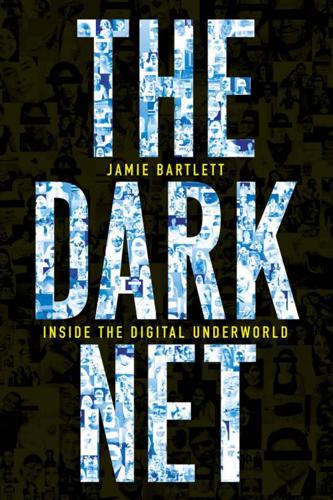
The Dark Net
by
Jamie Bartlett
Published 20 Aug 2014
The reason Bitcoin is so beloved by libertarians is because it takes control of the money supply away from the state. Satoshi distrusted the global banking system, and saw his crypto-currency as a way to undermine it. He hated that bankers and governments held the key to the money supply and could manipulate it to their own ends. He even added an out-of-place line of text into the ‘genesis block’ (the very first bit of the blockchain – his transactions with Finney), which read: ‘The Times 03/Jan/2009 Chancellor on brink of second bailout for banks.’ To keep governments and central banks out of it, Satoshi placed a cap on the total number of Bitcoins that could ever be produced: 21 million.
…
p.91 ‘Although he never attended a meeting . . .’ Levy, S., Crypto, pp.216–17. Akst, D., ‘In Cyberspace, Nobody Can Hear You Write a Check: Cash? History, The Evolution of Money is Moving Way Faster than the ATM Line. Guard Your Passwords’, LA Times, 4 February 1996. p.93 ‘He even added an out-of-place . . .’ http://en.bitcoin.it/wiki/Genesis_block (accessed 9 January 2014). p.94 ‘In his early posts, Satoshi wrote . . .’ http://www.mail-archive.com/cryptography@metzdowd.com/msg10001.html (accessed 9 January 2014). Many of the most influential people in the development of Bitcoin in these mailing list days – Wei Dai, Nick Szabo, Adam Back and, of course, Hal Finney – were all veterans of the Cypherpunk mailing list.

Data and the City
by
Rob Kitchin,Tracey P. Lauriault,Gavin McArdle
Published 2 Aug 2017
Pschetz Ledger 1: money, time and the blockchain There are many elements that make Bitcoin an interesting alternative currency, but critically it is the development and implementation of the blockchain – a distributed ledger that contains all transaction records ever conducted. The Bitcoin blockchain is an encrypted, cumulative ledger composed of ‘blocks’ of transactions that are verified by miners and which lead back to the first ‘Genesis’ block whose instance is timed as 18:15:05 GMT, on 3 January 2009, signifying the start of the currency. Blocks can contain the social, economic and geographic information about the senders and receivers of Bitcoin wallets, time of transaction, amount of Bitcoins being transferred, fees and IP addresses from which location can also be identified.
…
This process is verified by miners who compete to complete ‘proof of work’ functions, that is, computationally intensive algorithms, to check if every block that follows is legitimate (Maurer et al. 2013: 264). In addition, each new block essentially concatenates the previous block with the new set of transactions, creating the chain, which leads all the way back to the initial Genesis block. Once mined, the block is sealed and, currently, 12.5 Bitcoins are released as a reward to the winning miners, thus incentivizing the expensive mining activity and steadily populating the peer network with more currency. This linear association, connecting one block to the next through the integrity of the encrypted mathematical codes, keeps the chain intact, and, along with the massively distributed, multiple copies of the currency system, helps to prevent fraud.

Blockchain Revolution: How the Technology Behind Bitcoin Is Changing Money, Business, and the World
by
Don Tapscott
and
Alex Tapscott
Published 9 May 2016
Satoshi also distributed the mint by linking the issuance of bitcoins to the creation of a new block in the ledger, putting the power to mint into all the hands of the peer network. Whichever miner solved the puzzle and submitted proof of work first could receive a number of new bitcoins. There is no Federal Reserve, central bank, or treasury with control over the money supply. Moreover, each bitcoin contains direct links to its genesis block and all subsequent transactions. So no intermediaries are required. The functioning of the blockchain is mass collaboration at its best. You have power over your data, your property, and your level of participation. It’s distributed computing power enabling distributed and collective human power.
…
Ethereum, the blockchain platform eighteen months in the making, went live. We witnessed the launch firsthand in the Brooklyn office of Consensus Systems (ConsenSys), one of the first Ethereum software development companies. Around 11:45 a.m., there were high fives all around as the Ethereum network created its “genesis block,” after which a frenzy of miners raced to win the first block of ether, Ethereum’s currency. The day was eerily suspenseful. A massive thunderstorm broke over the East River, triggering loud and random emergency flood warnings on everyone’s smart phones. According to its Web site, Ethereum is a platform that runs decentralized applications, namely smart contracts, “exactly as programmed without any possibility of downtime, censorship, fraud, or third party interference.”

Blockchain: Blueprint for a New Economy
by
Melanie Swan
Published 22 Jan 2014
Each full node (i.e., every computer connected to the Bitcoin network using a client that performs the task of validating and relaying transactions) has a copy of the blockchain, which is downloaded automatically when the miner joins the Bitcoin network. The blockchain has complete information about addresses and balances from the genesis block (the very first transactions ever executed) to the most recently completed block. The blockchain as a public ledger means that it is easy to query any block explorer (such as https://blockchain.info/) for transactions associated with a particular Bitcoin address—for example, you can look up your own wallet address to see the transaction in which you received your first Bitcoin.

Cryptoeconomics: Fundamental Principles of Bitcoin
by
Eric Voskuil
,
James Chiang
and
Amir Taaki
Published 28 Feb 2020
While there is only one set of concepts, each of the other contexts has any number of possible variations consistent with them. There are many implementations (of the prototype and otherwise), consensus rules have deviated (in the prototype and in other implementations), history is dynamic and arbitrary (even the prototype-encoded genesis block could have been different without consequence), and each coin manifests an independent set of units and is supported by its own set of adherents. For these reasons Bitcoin is used herein as a label for Cryptodynamic Principles [436] . Implementations are referred to by their brands [437] , such as “Bitcoin Core ” [438] or “Libbitcoin ” [439] ; chains are referred to by the trading symbols in common use, such as “BTC” and “LTC”; consensus rules for a given chain are referred to in the context of the trading symbol, such as “LTC consensus rules”; a unit of coin is referred to in the lower case of the trading symbol, such as “btc” or “ltc” (a refinement of the ambiguous convention of using lower case “bitcoin” to refer to a unit of “BTC”); and communities are referred to as either “Bitcoin community” (generally) or “BTC community” (specifically).
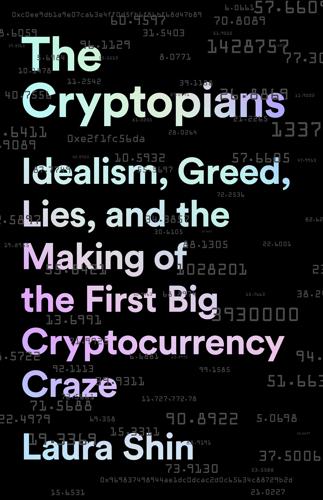
The Cryptopians: Idealism, Greed, Lies, and the Making of the First Big Cryptocurrency Craze
by
Laura Shin
Published 22 Feb 2022
Occasionally the site pointed to C++ as another option.19 Even though he was CTO, Gav could not tell the communications team to randomize the order or put the Go client below the C++ one. Geth—Jeff’s baby—became the main client promoted for launch. Vitalik created a script to scan the bitcoin blockchain to come up with a list of who had purchased ether and how much so that this could be coded into the genesis block and presale participants could receive the ether they had purchased at predetermined Ethereum addresses. Vitalik, Gavin, Jeff, and Aeron then selected a block of the test network, 1028201, chosen because it was a palindromic prime, and told anyone who wanted to run the Ethereum software to put the hash of that block into their genesis file.
…
On July 30, amid the Berlin office’s ambient restaurant-style lighting and retro furniture, they stared at a TV displaying a timer, waiting for the test network to hit block 1028201. Finally, on July 30, 2015, at 3:26:13 p.m. UTC, it did. On the screen popped up a Ron Paul “it’s happening” gif of the political figure waving his arms in the air excitedly. Gavin generated a genesis block, shouting, “I got it!” Finally, the idea Vitalik had dreamed up a little less than two years prior had become a reality. ON LAUNCH DAY, after the initial blog post about it, the Ethereum Foundation published a second post, titled “Announcing the New Foundation Board and Executive Director.”20 It said there were now four board members and a new executive director, who was “an alumni of Massachusetts Institute of Technology” and had “spent decades leading and completing complex IT and management consulting projects, founding and growing business ventures, and working with top educators, scientists and investors to bring inspiring research innovation to life.”

The Quiet Coup: Neoliberalism and the Looting of America
by
Mehrsa Baradaran
Published 7 May 2024
The explosion of cryptocurrencies and the so-called blockchain revolution began with the launch of bitcoin, which began as a reaction to the bank bailouts. In 2009, Satoshi Nakamoto—a pseudonym for the actual creator—laid out the code and logic of bitcoin. Bitcoin was a new form of currency, “mined” by computer algorithm through end-to-end encryption that would be a fixed unit of exchange existing on the blockchain. Embedded in the genesis block of code upon which all bitcoin could be “mined” was a single line of text: “The Times 03/Jan/2009 Chancellor on brink of second bailout for banks.” Nakamoto’s pitch was that the supply of bitcoin, unlike the U.S. dollar, would be finite; bitcoin’s code makes it impossible to “mine” more bitcoin than what was initially written into the code.
…
Yet the escape offered by alternative currencies has only been an escape into another rigged game, built on zero-sum asset scarcities and a distrust of society buried at its foundation. Unless those assumptions too are examined, the system of abstract assets will continue to feed on absurdity until it exhausts itself. To actually reach for hope for a profitable future, justice cannot be avoided. The root philosophy—the “genesis block”—of our economic theory is the myth of inherent hierarchy—of race, of gender, and of the kind of genius recognized as such. Neoliberal economic theory created a meritocracy of intelligence that was rooted in achieving its own ends: the masters of the universe were stockbrokers, and the geniuses of the market—Greenspan, Summers, Posner, and the rest—were not visionaries but, rather, articulate defenders of the status quo.
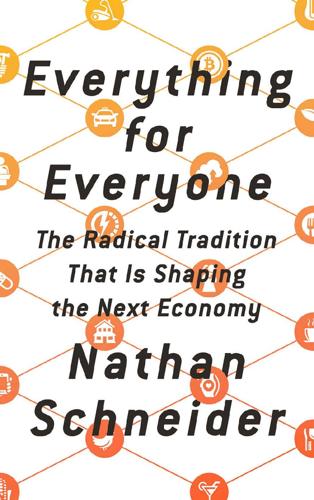
Everything for Everyone: The Radical Tradition That Is Shaping the Next Economy
by
Nathan Schneider
Published 10 Sep 2018
On February 11, 2009, Bitcoin’s pseudonymous creator, Satoshi Nakamoto, announced his invention in an online forum by explaining, “The root problem with conventional currency is all the trust that’s required to make it work.”4 This was just as the financial giants were breaching the world’s trust. At the time, only a month after Bitcoin’s initial “genesis block” went online, users could mine with an ordinary computer, though doing so was technically difficult and barely lucrative. But the citizen-miners could also choose which version of the software to run, a kind of voting power over the future of the network. This was unquestionably a breakthrough.

The Truth Machine: The Blockchain and the Future of Everything
by
Paul Vigna
and
Michael J. Casey
Published 27 Feb 2018
Bitcoin then takes this linking function one step further. Through another cryptographic hashing function, the winning miner ties their newly created block to the previous one. This turns the entire blockchain into a never-ending, mathematically linked chain of hashed transactions that goes all the way back to the “Genesis” block of January 3, 2009. Make a change to a transaction from January 15, 2011, and the blockchain’s interlinked hash-based record of all the data recorded in the subsequent seven years will be completely altered. It’s a bit like how banks use exploding dye to protect banknotes: any thief who tries to spend the stolen money is immediately exposed.

Cryptoassets: The Innovative Investor's Guide to Bitcoin and Beyond: The Innovative Investor's Guide to Bitcoin and Beyond
by
Chris Burniske
and
Jack Tatar
Published 19 Oct 2017
_r=1&hp&oref=slogin; http://old.seattletimes.com/html/businesstechnology/2008171076_weblehman10.html. 17. http://www.wsj.com/articles/SB123051066413538349. 18. http://som.yale.edu/sites/default/files/files/001-2014-3A-V1-LehmanBrothers-A-REVA.pdf. 19. https://www.stlouisfed.org/financial-crisis/full-timeline. 20. https://bitcoin.org/bitcoin.pdf. 21. http://www.mail-archive.com/cryptography@metzdowd.com/msg09980.html. 22. https://www.fdic.gov/news/news/press/2006/pr06086b.pdf. 23. http://www.mail-archive.com/cryptography@metzdowd.com/msg09959.html. 24. http://www.mail-archive.com/cryptography@metzdowd.com/msg09971.html. 25. http://www.mail-archive.com/cryptography@metzdowd.com/msg10006.html. 26. http://www.nytimes.com/packages/html/national/200904_CREDITCRISIS/recipients.html. 27. https://en.bitcoin.it/wiki/Genesis_block. 28. http://www.thetimes.co.uk/tto/business/industries/banking/article2160028.ece. 29. http://historyofbitcoin.org/. 30. http://p2pfoundation.ning.com/forum/topics/bitcoin-open-source?xg_source=activity. 31. http://archive.is/Gvonb#selection-3137.0-3145.230. 32. http://www.nytimes.com/interactive/2009/02/04/business/20090205-bailout-totals-graphic.html?

Boom: Bubbles and the End of Stagnation
by
Byrne Hobart
and
Tobias Huber
Published 29 Oct 2024
The prophecy of Satoshi Nakamoto: Bitcoin as religion Evidence from mailing lists suggests that Satoshi Nakamoto began coding the Bitcoin protocol around May 2007. In August 2008, after registering the bitcoin.org domain, he circulated drafts of the Bitcoin white paper. That October he publicly released the white paper, followed by the initial code. On January 3, 2009, Nakamoto mined the so-called genesis block comprising the first 50 bitcoins. By December 2010, others had taken over the maintenance of the project. And on December 12, 2012, Nakamoto posted his final message to the Bitcoin forum. Bitcoin’s origin as the obscure and radically novel work of a mysterious creator shares structural similarities with mythologies and religions.

Engineering Security
by
Peter Gutmann
“Engineering the Bitcoin Gold Rush: An Interview with Yifu Guo, Creator of the First Purpose-Built Miner”, Alec Lui, 26 March 2013, http://motherboard.vice.com/blog/engineering-the-bitcoin-goldrush-an-interview-with-yifu-guo-creator-of-the-first-asic-basedminer. [86] [87] [88] [89] [90] [91] [92] [93] [94] [95] [96] [97] [98] “Mining Dashboard — The Genesis Block”, http://mining.thegenesisblock.com. “scrypt: A new key derivation function”, Colin Percival, presentation at BSDCan 2009, May 2009, http://www.bsdcan.org/2009/schedule/attachments/87_scrypt.pdf. “Scrypt-based miners and the new cryptocurrency arms race”, Danny Bradbury, 23 October 2013, http://www.coindesk.com/scrypt-minerscryptocurrency-arms-race.